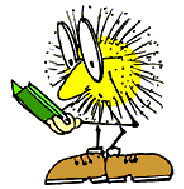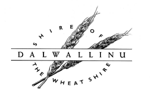 WorldWideWattle
is a collaborative project involving the Western Australian Herbarium within the Department of Biodiversity, Conservation and Attractions and the Western Australian Shire of Dalwallinu.
WorldWideWattle
is a collaborative project involving the Western Australian Herbarium within the Department of Biodiversity, Conservation and Attractions and the Western Australian Shire of Dalwallinu.
The aim of the WorldWideWattle is to deliver authoritative information relating to species of Acacia sens. lat. in order to inform, educate and promote the conservation, utilisation and enjoyment of this important group of plants.
Despite its name WorldWideWattle is global in scope. While much of the information under Info Gallery deals with Australia (where many Acacia species are known by the common name of Wattle) the Species Gallery deals with species world wide. Furthermore, Acacia is the largest group of woody plants in Australia, with more than 1,000 species currently recognized; many of these species are grown, not only within Australia but also world wide, for economic, environmental and social reasons. These are the reasons for naming the site WorldWideWattle.
Site Management
Content Manager. Bruce Maslin (WA Herbarium, DPaW)
IT Support. Simon Woodman; Ben Richardson (WA Herbarium, DPaW)
Version
This is version 2 of the WorldWideWattle website.
How to cite us
This site may be cited as: WorldWideWattle ver. 2. Published on the Internet at: www.worldwidewattle.com [Accessed*].
*Insert the date you accessed the site, e.g. 1 July 2015.
 |
 |
Acknowledgements
The stakeholders of World Wide Wattle are extremely grateful to the many people who have helped us develop and maintain this site. We therefore wish to acknowledge the professional assistance provided by the following individuals and institutions, and to thank them for their contribution.
Stephen Midgley (formerly of CSIRO Forestry and Forest Products, Canberra) provided the initial concept of WorldWideWattle, and facilitated its early design that was drawn up by Dr Peter Stevens (Canberra). Ben Richardson, Paul Gioia and Nicholas Lander (Western Australian Herbarium, Perth) for assistance with developing and implementing the site. Ben in particular made a crucial contribution to the construction and early development of the site, and posted most of the initial content. Simon Woodman provided the essential back-end database systems that are so necessary for the effective maintenance of the site. Milton Andrews (Square Peg Design, Perth) designed and produced the home page graphics.
We are very appreciative of the assistance received from a number of specialists. In particular we wish to thank Peter Kelly (Royal Botanic Gardens, Melbourne) for helping Bruce Maslin (Western Australian Herbarium, Perth) prepare the children’s section under For Schools and Rebecca Monaghan (Royal Botanic Gardens, Melbourne) for formatting this contribution for posting to the site. Maurice McDonald (CSIRO Forestry and Forest Products, Canberra) provided most of the detailed information concerning the utilisation of Acacia. Much of this utilisation content was originally prepared for the web by the Australian Biological Resources Study (Department of the Environment and Heritage, Canberra) and that organization is gratefully acknowledged for allowing us to use it here on World Wide Wattle. Dr Laurence Mound (CSIRO, Division of Entomology, Canberra) provided the essay on Acacia Thrips and Mrs Marion Simmons (Legana, Tasmania) contributed the chapter on the Cultivation of Wattles. Kimberly Maslin (South Perth, Western Australia) prepared the distribution maps, Joy Wornes (Wubin, Western Australia) contributed her original poetry and Jack Lane (Hyden, Western Australia) provided information and photographs of Acacia lanei. Helen Dempsey and Jenni Goldsworthy (Dept. of Prime Minister and Cabinet, Canberra) provided advice and other assistance concerning the Australian Coat of Arms and the Australian Honours and Awards. Murray Fagg (Australian National Botanic Gardens, Canberra) assisted with various content located under the Symbolic Usage of Acacia. Except where noted below the remaining content of the site was prepared by Bruce Maslin.
Regarding Species Gallery, the Department of Conservation and Land Management would like to thank Mary Colreavy (Director, Australian Biological Resources Study, Department of the Environment and Heritage, Canberra), Nicholas Alexander (Managing Publisher, CSIRO Publishing, Melbourne) and the WATTLE custodians for allowing us to post the species fact sheets that were originally published on the WATTLE CD ROM. The almost 1 200 descriptions that are delivered here were expertly prepared for presentation on World Wide Wattle by Robyn Lawrence (Australian Biological Resources Study, Canberra). We would also like to thank the following artists whose beautiful images appear on these pages: Margaret Pieroni, Marion Simmons, Grace Lithgow, Terry Tame, Kevin Thiele, Wil Smith, Marion Westmacott, Ludwick Dutkiewicz, Gilbert Dashorst, Suzanne Curry, John Rainbird, Anita Barley, Leon Costermans, D. Keane and Bruce Maslin.
A number of people and organizations provided photographs that appear in the Image Gallery and elsewhere on the site. In particular we wish to thank Martin O’Leary (State Herbarium of South Australia, Botanic Gardens, Adelaide), Gwilym Lewis (Royal Botanic Gardens, Kew), J. Plaza, J.M. Baldwin and M. Proteners (Botanic Gardens Trust, Sydney), Dr Gordon Guymer (Director, Queensland Hebarium, Brisbane), for images provided by that institution), Murray Fagg (Australian National Botanic Gardens, Canberra), J. B. Williams (University of New England, Armidale, N.S.W.), B.R. Maslin (Western Australian Herbarium , Perth) and CSIRO Forestry and Forest Products in Canberra for images provided by Maurice McDonald and other staff of that organization. Alun Jones (Community Newspaper Group) provided invaluable assistance with respect to image manipulation.
Brent Parkinson (Shire of Dalwallinu) is gratefully acknowledged for his encouragement and practical support for the World Wide Wattle project.
Annette Wilson (Perth) is thanked for editorial and other assistance provided, especially in relation to information under individual taxon treatments (accessed via Species Gallery).